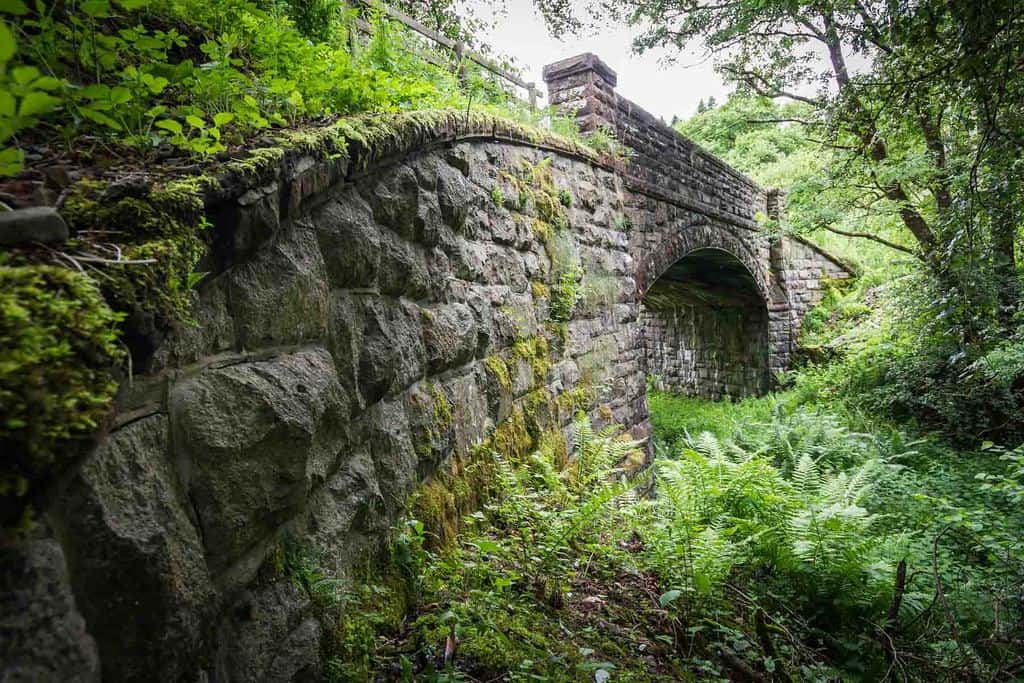Campaigners have called on Dumfries & Galloway Council to take urgent action after a “perverse decision” by planners threatened to make the proposed reopening of a railway more difficult and costly.
In April last year, Highways England told the local authority of its intention to infill a disused bridge at Lochanhead, spanning the former Dumfries-Stranraer line. The route’s reopening is identified as an option for improving regional links in the initial appraisal of the South West Scotland Transport Study. The final report is due in the autumn. It would also be needed if a rail tunnel was driven under the Irish Sea, as advocated by the High Speed Rail Group.
Highways England, which is owned by the UK Government, manages the Historical Railways Estate of 3,100 disused structures on the Department for Transport’s behalf, including about 600 bridges, tunnels and viaducts in Scotland.
In a letter to planners about the Lochanhead bridge, Jacobs – the agents acting for the roads company – said that “the arch barrel has open joints throughout” and infilling is needed to “remove the associated risk of structural collapse and harm to the public”.
The structure, which carries a minor road over the former railway, remains in fair condition and shows no signs of being overloaded. Campaigners state that repointing the open joints would greatly increase its load-bearing capacity.
Engineering works normally need planning consent, but a council officer told Highways England that the works “would be classed as a repair and do not require planning permission”.
Chris Rosindale from the Reopening the Dumfries-Stranraer Railway group said: “Jacobs sent the same template letter about bridge infilling schemes to a number of local authorities last April. We’ve obtained more than a dozen responses in which they are told to apply for planning permission.
“What they’re proposing at Lochanhead is not repair; little or no work will be carried out to the existing bridge. They will be creating a new and substantial structure which buries most of it. The Council is guilty of a planning blunder with potentially serious long-term consequences.”
The Planning (Scotland) Act 2019 states that local authorities must have “regard to the desirability of preserving disused railway infrastructure for the purpose of ensuring its availability for possible future public transport requirements”. Dumfries & Galloway Council has a specific policy “against any development on or adjacent to former railway routes with a reasonable prospect of being reused”.
Mr Rosindale continued: “Despite this, the Council granted consent for a damaging infill scheme without seeking sufficient detail to make an informed judgement. It needs to rectify this perverse decision before it’s too late.”
Also at risk of being infilled is a second structure near Kirtlebridge, carrying the B722 over the former Solway Junction Railway which closed in 1931. The old trackbed was acquired by a local farmer and, for at least the past 60 years, it has been used for agricultural purposes. Without being able to pass under the bridge, two acres of his property will be inaccessible.
Dr Iain Gow, the landowner, said: “This is cultural vandalism and cannot be justified on engineering grounds. Even Highways England’s own contractor admitted to me that the bridge is still in fair condition. It’s 152 years old and needs a few minor repairs, but they would cost a fraction of the £145K that infilling is likely to set back the taxpayer.
“At a time when we’re trying to encourage more people to adopt sustainable forms of transport and exercise more outdoors, the old line offers the potential to extend the currently proposed rail trail connecting Annan via Chapelcross and on to Kirtlebridge. We need to see this fabulous infrastructure as an opportunity to build a better future, not put it beyond use for short-term asset management purposes.
“At very least, the Council has a duty to ensure that backward-looking schemes like this are properly scrutinised to ensure the public interest is best served and owners adjacent to the structures are not disadvantaged. It’s time for the Council to do the right thing.”
Last month, Highways England infilled a bridge in Cumbria which was needed for a connection between two heritage railways. The local council had authorised the work without planning permission. Campaigners described the scheme as “an act of sabotage” and “environmental nightmare”, with the Victorian structure now buried beneath tonnes of aggregate and concrete.





